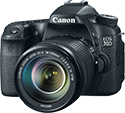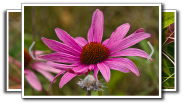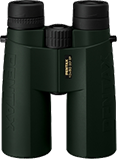black-legged checkered beetle
(Enoclerus nigripes)
Conservation • Description • Habitat • Ecology • Distribution • Taxonomy
|
|
||||||||||||||
Description |
Black-legged checkered beetle is a common, small, predaceous, ant-mimicing beetle. It occurs in the United States east of the Great Plains, but it is absent from the Deep South. It occurs in southern Canada from Nova Scotia to Saskatchewan. Adults are active in spring and early summer. They have been recorded on a variety of both coniferous and deciduous trees, including American elm, ash, butternut, juniper, mulberry, spruce, white pine, and wild cherry. They have also been found on the ground in leaf litter. They feed on the larvae, pupae, and adults of bark beetles in the family Scolytinae and weevils in the family Curculionidae. Adults are 3⁄16″ to ¼″ (5.0 to 7.0 mm) in length. The body is robust and somewhat cylindrical in shape, elongate and narrow when viewed from above, convex when viewed from the front or from behind. It is completely covered with stiff, erect, bristly hairs. The body is dull brownish red, brownish orange, or reddish orange (red). The head and mouthparts are directed downward. The head is red, and it is as wide as the first segment of the thorax. The surface is finely and sparsely pitted (punctate). The compound eyes are bulging, and they are distinctly notched. The antennae have 11 segments. The last 3 segments are expanded and form a compact club. The club is somewhat abruptly enlarged. The finger-like sensory mouthparts (palps) are narrow. The exoskeletal plate covering the thorax (pronotum) is longer than wide and red. It is much narrower at the rear than the base of the wing covers (elytra). The surface is finely and densely punctate. There is a shallow but distinct transverse groove on the front half. The elytra are wider than the pronotum, widest on the rear third. The surface is coarsely and densely punctate in front, becoming more finely punctate approaching the rear. The basal third is red, including in the shoulder (humeral) area. The rear two-thirds has four transverse bands: a narrow black band; a broad, somewhat arched, pale band; a much broader black band; and a pale band. The tip may be entirely black, entirely pale, or pale grading to black. The legs are black. This is the feature that gives the species its common name. The last part of each leg (tarsus), corresponding to the foot, has 5 segments. At the end of each tarsus there is a pair of claws and a hairy pad between the claws. The claws are of equal size, and they are toothed. There are two subspecies. The description above refers to the nominate subspecies Enoclerus nigripes ssp. nigripes. The subspecies Enoclerus nigripes ssp. rufiventris is entirely black above except for the whitish or pale yellow bands on the elytra. |
Size |
Total length: 3⁄16″ to ¼″ (5.0 to 7.0 mm) |
Similar Species |
Habitat |
On trees, including American elm, ash, butternut, juniper, mulberry, spruce, white pine, wild cherry; and in leaf litter. |
Ecology |
Season |
Spring and early summer |
Behavior |
|
Life Cycle |
|
Larva Food |
|
Adult Food |
Larvae, pupae, and adults of bark beetles in the family Scolytinae and weevils in the family Curculionidae |
Distribution |
||
|
Sources Biodiversity occurrence data published by: Minnesota Biodiversity Atlas (accessed through the Minnesota Biodiversity Atlas Portal, bellatlas.umn.edu, 5/28/2025). |
|
| 5/28/2025 | ||
Occurrence |
||
Common |
||
Taxonomy |
|
Order |
Coleoptera (Beetles) |
Suborder |
Polyphaga (Water, Rove, Scarab, Long-horned, Leaf, and Snout Beetles) |
Infraorder |
Cucujiformia |
Superfamily |
Cleroidea (bark-gnawing, checkered and soft-winged flower beetles) |
Family |
Cleridae (checkered beetles) |
Subfamily |
Clerinae |
Genus |
Enoclerus |
Subordinate Taxa |
|
black-legged checkered beetle (Enoclerus nigripes ssp. nigripes) redbellied clerid (Enoclerus nigripes ssp. rufiventris) |
|
Synonyms |
|
|
|
Common Names |
|
black-legged checkered beetle |
|
Glossary
Elytra
The hardened or leathery forewings of beetles used to protect the fragile hindwings, which are used for flying. Singular: elytron.
Palp
Short for pedipalp. A segmented, finger-like process of an arthropod; one is attached to each maxilla and two are attached to the labium. They function as sense organs in spiders and insects, and as weapons in scorpions. Plural: palpi or palps.
Pronotum
The exoskeletal plate on the upper side of the first segment of the thorax of an insect.
Punctate
Dotted with pits (punctures), translucent sunken glands, or colored spots of pigment.
Tarsus
On insects, the last two to five subdivisions of the leg, attached to the tibia; the foot. On spiders, the last segment of the leg. Plural: tarsi.
visitor Photos |
||
Share your photo of this insect. |
||
This button not working for you? |
||
Alfredo Colon |
||
 |
 |
|
MinnesotaSeasons.com Photos |
||
|
||
|
||

visitor videos |
||
Share your video of this insect. |
||
This button not working for you? |
||
|
Other videos |
||
|

|
Created: 5/28/2025 Last Updated: © MinnesotaSeasons.com. All rights reserved. |




